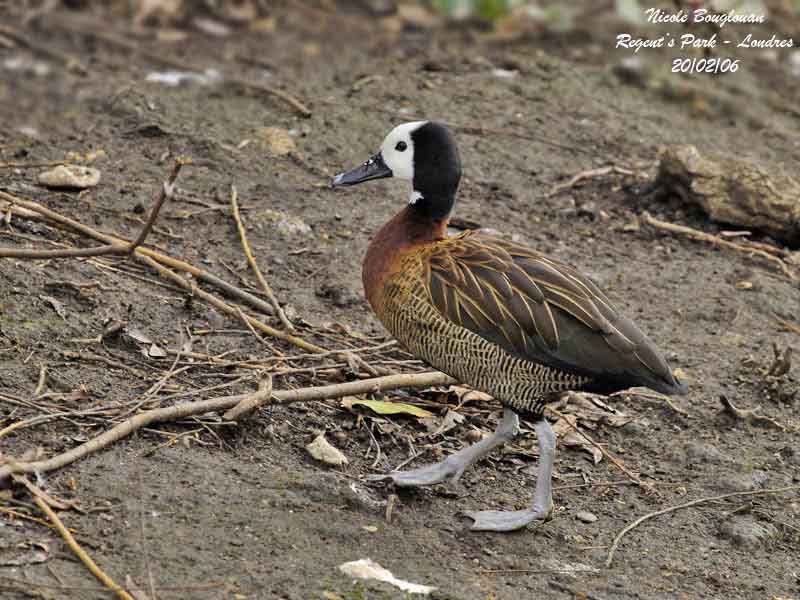
White-faced Duck
Dendrocygna viduata
Anseriforme Order – Anatidae Family
BIOMETRICS:
L : 45-53 cm
Wingspan : 86-94 cm
Weight : M : 685 g ; F : 660 g
DESCRIPTION:
White-faced Duck has long neck, long legs and stand up appearance of wigeons.

Adult has white face, throat and forehead, from half crown, crossing behind the eyes to the throat, forming a beautiful contrast with black head back and upper nape.
A chestnut wash goes down to the front, until the bottom and the hind neck, and on upper chest. Lower chest, belly and tail are black. Flanks are finely barred with black and white waves. Upperparts are dark brown, with wings bordered with buff, and particularly scapulars. Wings are dark brown.
Bill is black with pale band at tip. Eyes are dark brown. Legs are grey.
Young is duller. Face and throat are grey or pale buff, chest is relatively dull chestnut.
Bill is black with pale tip. Eyes are dark brown. Legs are grey.
Chicks have dark olive-brown upperparts with large yellow patches on wings and back. Underparts are yellow. Face is streaked. Bill and legs are grey.
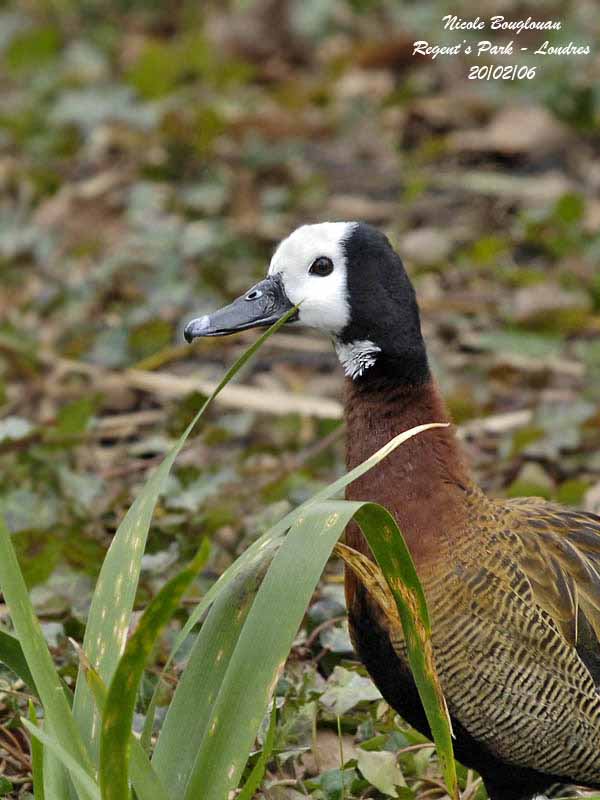
VOICE :
White-faced Duck is relatively vocal, especially when it is feeding. Its usual song is a clear, thin and melodious whistle with three notes "tsri-tsri-tsriio".
HABITAT:
White-faced Duck lives close to freshwater lakes and marshes, and on rivers’ shores, in open areas. It usually avoids wooded zones and forests.
RANGE :
South America tropical regions, sub-Saharan Africa, Madagascar and Comoros.
BEHAVIOUR:
White-faced Duck feeds by pecking on the surface, while dabbling or wading. It usually fishes at dusk or at night, but it can also feed during the day. They may form large flocks of several hundreds of birds. It hangs about during the day in sandy areas and mudflats. It sometimes mixes with other ducks in roosting areas, but it remains rather with birds of its own species.
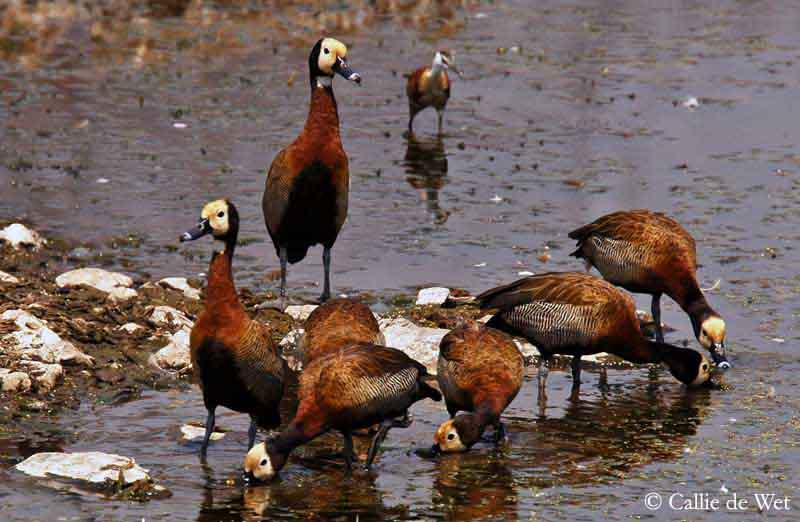
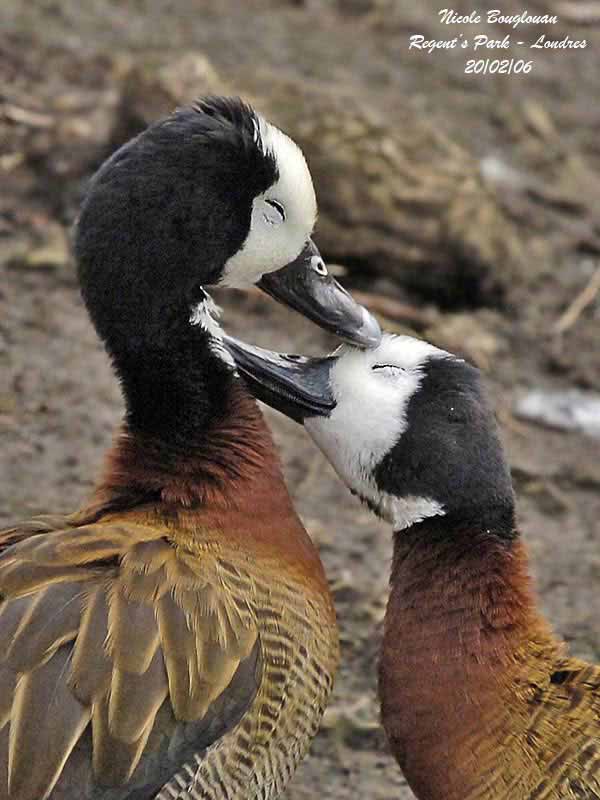
White-faced Ducks perform mutual preening on head and neck. The goal of this behaviour is maybe for cleaning the mate’s plumage, in order to remove possible parasites, but this activity main effect is to strengthen pair bonds between the two mates.
It is partially migratory, moving only to find water when its habitat becomes too dry and arid.
FLIGHT:
White-faced Duck performs a powerful flight thanks to its broad wings. In flight, it appears completely dark, with contrasting white head, and distinctive wigeon silhouette, long stretched neck and legs well projected on the rear of the short tail. Wing beats are relatively deep.
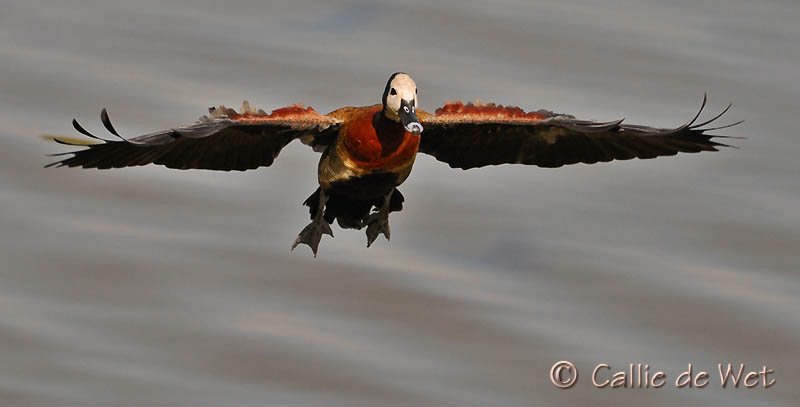
REPRODUCTION :
White-faced Duck nests in small groups or loose colonies. Breeding starts with the rainy season. Nest is on the ground, among the dense marsh vegetation, and even sometimes in small trees in flooded area, occasionally in the cavity of a trunk or in the fork of the branches. Nest is made with plant material, with or without lining in the interior.
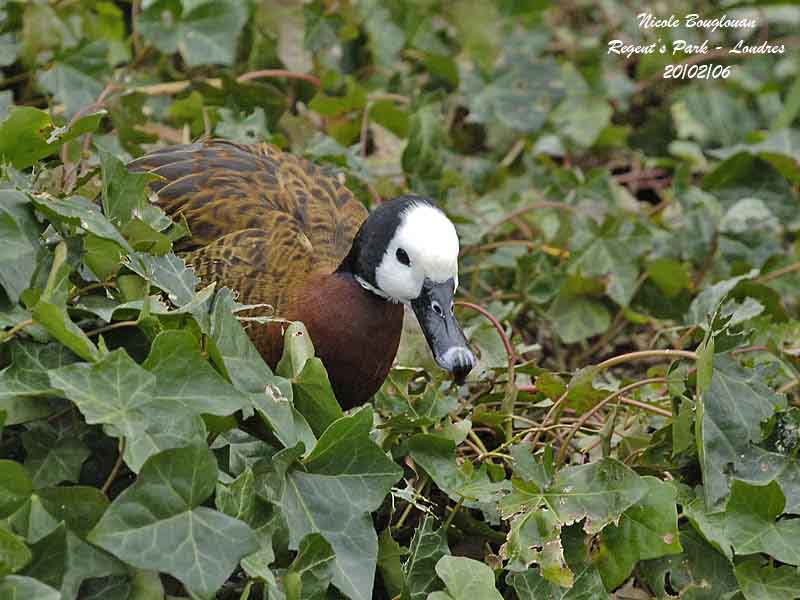
The female lays about 10 smooth, creamy white eggs, of 47 X 37 mm and 36 gr. Incubation lasts about 26 to 28 days, shared by both parents, which also defend the nest. Hatchings are synchronized. Chicks are fed and raised by both adults who conceal the chicks into the dense vegetation, as long as they don’t reach their complete plumage. This one appears at about 45 to 68 days after hatching. Pair has very strong bonds, and remains probably together for entire life.
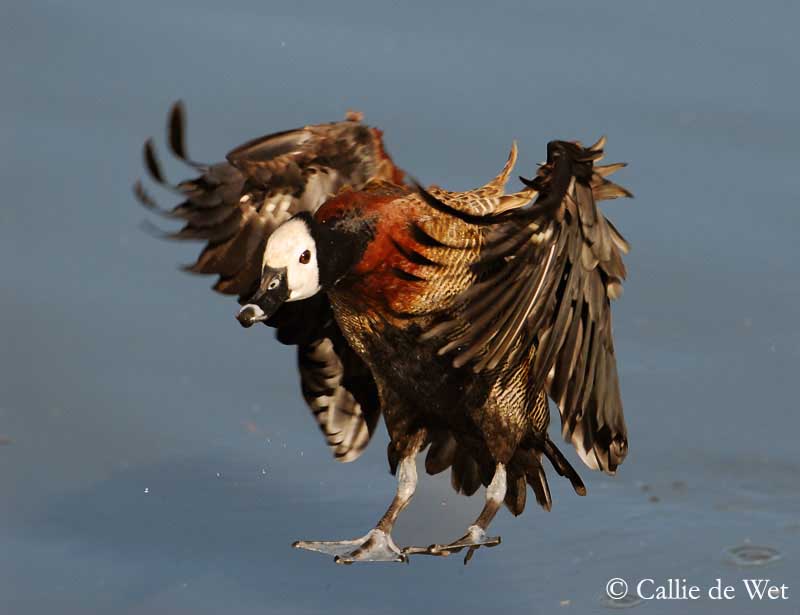
Fr: Dendrocygne veuf
All : Witwenpfeifgans
Esp : Suirirí Cariblanco
Ital : Dendrocigna facciabianca
Nd : Witwangfluiteend
Russe : Белолицая свистящая утка
Sd : Vithuvad visseland
Photographs by Callie de Wet
Flickr Galleries
Text and photographs by Nicole Bouglouan
Sources :
HANDBOOK OF THE BIRDS OF THE WORLD vol 1 by Josep del Hoyo-Andrew Elliot-Jordi Sargatal - Lynx Edicions - ISBN: 8487334105
BIRDS OF AFRICA SOUTH OF THE SAHARA by Ian Sinclair and Peter Ryan - Princeton University Press Princeton and Oxford - ISBN: 0691118159
GUIDE DES CANARDS, DES OIES ET DES CYGNES – de Steve Madge - Delachaux et Niestlé - ISBN: 2603013769
BirdLife International (BirdLife International)
DIET :
White-faced Duck feeds mainly on vegetation, rice, and seeds, but also on molluscs, insects and crustaceans.
PROTECTION
THREATS
STATUS:
White-faced Duck chicks are captured by caimans, jabirus and caracaras. However, populations are not threatened and remain important.